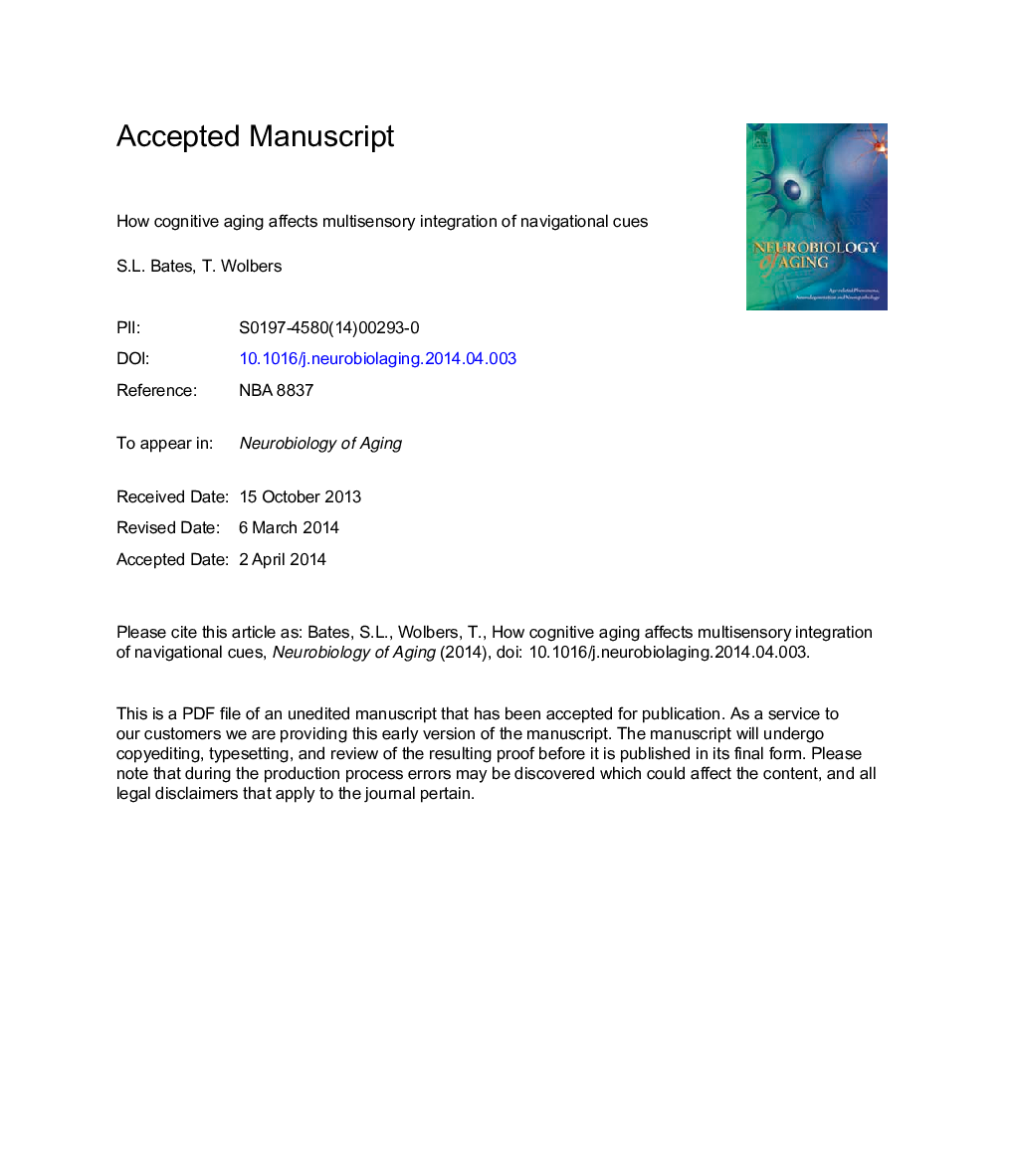| Article ID | Journal | Published Year | Pages | File Type |
|---|---|---|---|---|
| 6805328 | Neurobiology of Aging | 2014 | 30 Pages |
Abstract
Entorhinal grid cells and hippocampal place cells are key systems for mammalian navigation. By combining information from different sensory modalities, they provide abstract representations of space. Given that both structures are among the earliest to undergo age-related neurodegenerative changes, we asked whether age-related navigational impairments are related to deficient integration of navigational cues. Younger and older adults performed a homing task that required using visual landmarks, self-motion information, or a combination of both. Further, a conflict between cues assessed the influence of each sensory domain. Our findings revealed performance impairments in the older adults, suggestive of a higher noise in the underlying spatial representations. In addition, even though both groups integrated visual and self-motion information to become more accurate and precise, older adults did not place as much influence on visual information as would have been optimal. As these findings were unrelated to potential changes in balance or spatial working memory, this study provides the first evidence that increasing noise and a suboptimal weighting of navigational cues might contribute to the common problems with spatial representations experienced by many older adults. These findings are discussed in the context of the known age-related changes in the entorhinal-hippocampal network.
Related Topics
Life Sciences
Biochemistry, Genetics and Molecular Biology
Ageing
Authors
Sarah L. Bates, Thomas Wolbers,
